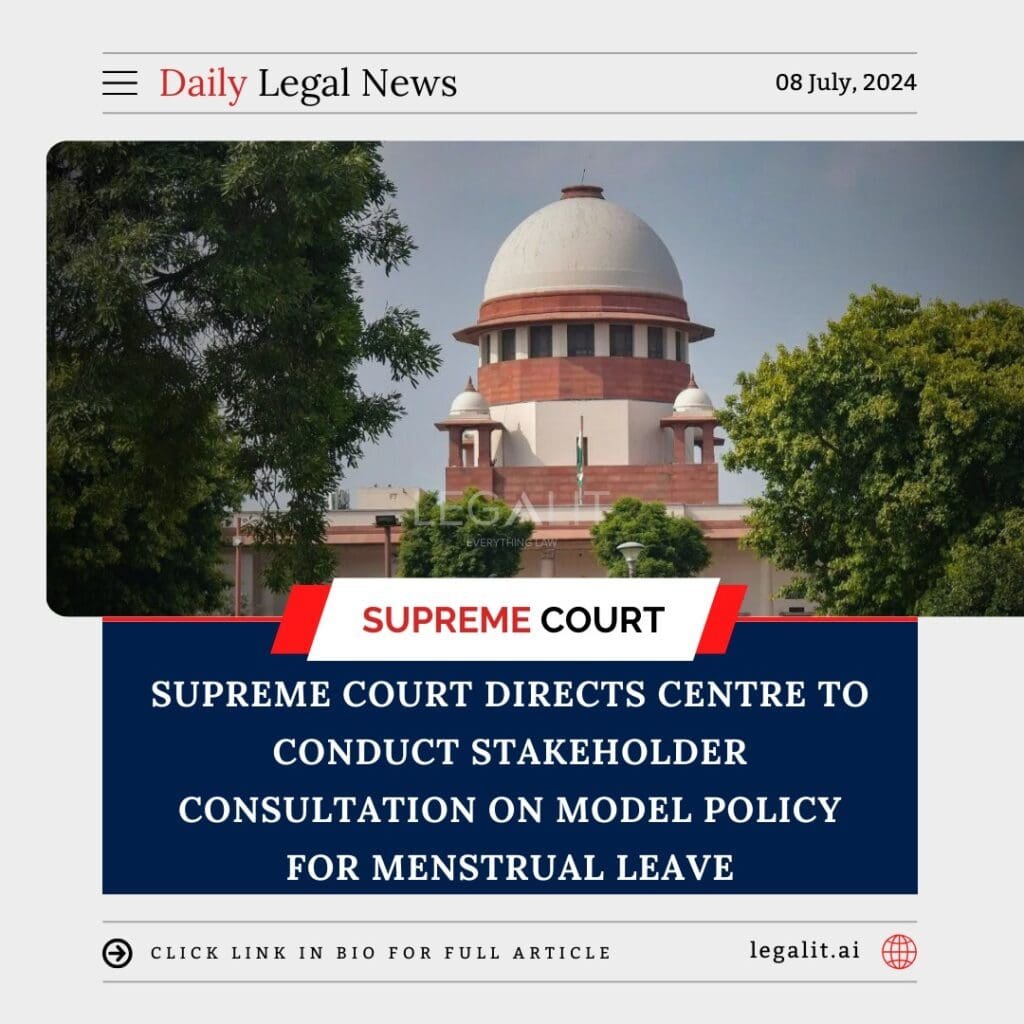
In a landmark decision, the Supreme Court of India has directed the central government to hold a comprehensive consultation with stakeholders to develop a model policy on menstrual leave. This directive underscores the Court’s recognition of the need for addressing menstrual health and its impact on women’s participation in the workforce.
Background and Context
The issue of menstrual leave has been a topic of debate globally, with advocates arguing that it is essential for ensuring women’s health and dignity. In India, discussions around menstrual leave have gained momentum, with some states and private organizations already implementing policies to support women during their menstrual cycles.
Supreme Court’s Directive
The Supreme Court’s order came in response to a public interest litigation (PIL) that sought the implementation of menstrual leave policies across the country. The petitioner argued that menstrual leave is a crucial aspect of gender equity and women’s health, and called for a standardized policy to be adopted nationwide.
Key Points of the Directive
- Stakeholder Consultation: The Supreme Court has instructed the Centre to engage with various stakeholders, including women’s rights organizations, health experts, employers, and employees, to gather diverse perspectives on the issue. This consultation aims to create a holistic and inclusive policy framework.
- Model Policy Development: Based on the insights from the consultations, the Centre is expected to draft a model policy that can be adopted by states and organizations across the country. The policy should address the practical aspects of implementation, ensuring it is feasible and beneficial for women.
- Health and Productivity: The Court highlighted the importance of balancing health considerations with productivity concerns. The model policy should aim to provide adequate support for women while minimizing disruption to workplace operations.
Implications of the Ruling
The Supreme Court’s directive has several significant implications:
- National Framework: By pushing for a model policy, the Court is paving the way for a standardized approach to menstrual leave, ensuring that women across different regions and sectors have access to similar benefits.
- Gender Equity: This move is a step towards greater gender equity in the workplace, acknowledging the unique health needs of women and supporting their full participation in the workforce.
- Public Awareness: The ruling brings the issue of menstrual health into the mainstream, fostering greater public awareness and reducing stigma around menstruation.
Reactions to the Decision
The decision has been met with widespread support from women’s rights activists and health advocates:
- Women’s Rights Organizations: Many organizations have welcomed the directive, viewing it as a progressive step towards recognizing and addressing the health needs of women.
- Employers and Industry Leaders: While some employers have expressed concerns about the operational implications of menstrual leave, many industry leaders see the potential for creating a more inclusive and supportive work environment.
Conclusion
The Supreme Court’s directive to the Centre to hold stakeholder consultations and develop a model policy for menstrual leave marks a significant advancement in promoting women’s health and gender equity in India. As the consultations proceed and the policy takes shape, it is expected to provide a framework that supports women while balancing the needs of employers. This ruling sets a precedent for other countries to consider similar measures, highlighting the importance of addressing menstrual health in the context of workplace equality.